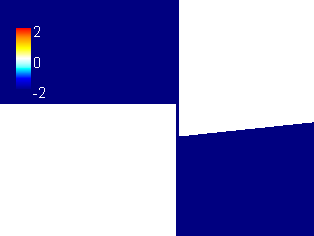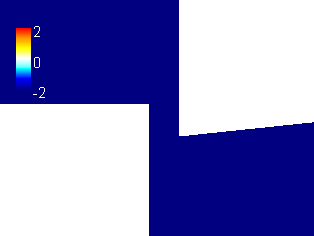FEM Simulation of Ultra High-Speed Metal Cutting Processes
What does happen when cutting speeds exceed plastic wave speeds of workpiece material?
This page opens since 16 Feburuary 2006

FEM Simulation of Ultra High-Speed Metal Cutting Processes
What does happen when cutting speeds exceed plastic wave speeds of workpiece material?
This page opens since 16 Feburuary 2006

 Japanese
Japanese
|
All Rights Reserved by Dr. Shinozuka, Jun.
|
What is an ultra high-speed cutting?
In this study, when a cutting speed exceeds a speed of the plastic stress wave of workpiece material, the cutting situation is defined as "Ultra High-Speed Cutting". When the cutting speed is less than the plastic waves speeds of the workpiece, even if the cutting speed is more than 1000m/s, it is called "High Speed Cutting". Contrarily, when a speed of the plastic stress wave are very low-speed, for example, it is 1m/s, cutting speed of 10m/s is referred to as "Ultra High-Speed Cutting", in this study.
The cutting phenomena under ultra high-speed cutting condition differs from those of high-speed cutting and low-speed cutting conditions. In order to investigate the difference between cutting phenomena in ultra high-speed cutting and that in high-speed cutting, a FEM cutting simulation was carried out.
The FEM cutting simulator is developed by me. Program language is Fortran. The postprocessor (painting tool) is developed with Microsoft Visual-C#.NET. Because I want to analyze the progpagation of the stress waves, I developed a dynamic thermo elastic plastic FEM with explicit method. Newton's second law (motion of equation) is employed to solve the displacement. Here is different point from a static FEM cutting simulation.
The following GIF animations show the difference between the distribution of the hydrostatic stress in ultra high-speed cutting that in high-speed cutting. We can readily realize what is going on in the shear zone ultra high-speed cutting conditions.


For the case of "High-speed Cutting"


For the case of "Ultra High-speed Cutting"
Left hand side figures show hydrostatic stress by contour lines, while right hand figures show it by gradation colors.
We can see that high levels of hydrostatic stresses is generated in ultra high-speed cutting, which a cutting speed exceeds the plastic wave speed of the workpiece material.
As we can see above animations, the chip formation and stress state in the shear zone differ quite whether a cutting speed exceeds the plastic wave speed of the workpiece material or not.
When a cutting speed exceeds the plastic wave speeds of the workpiece, plastic shock waves are generated!